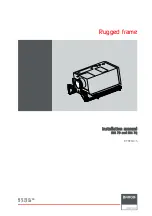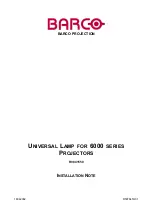
Appendix B
Common Questions
VXI/VMEpc 600 Series for Windows 95/NT
B-2
©
National Instruments Corporation
8.
Run VISAIC to verify that you can communicate with your system
using VISA.
The new utility components are as follows:
•
T&M Explorer—Use this utility to configure, view, and initialize your
system.
•
Resman—You can still use this as before. However, you can perform
resource manager operations directly from T&M Explorer or
configure it to run Resman automatically at startup. See What about
running Resman? later in this section.
•
VIC—Use as before.
•
VISAIC—Use as before.
•
NI Spy—Use this utility to debug your NI-VXI or NI-VISA
application.
Your setup might now include the following steps:
1.
Install components and boot the system.
2.
Execute VXI Resource Manager responsibilities (either run Resman or
click the build button in T&M Explorer.)
3.
Run VIC or VISAIC to verify communication in your system.
What happened to VXIinit?
You no longer need to run VXIinit to initialize settings on your hardware.
The loading of hardware settings now takes place in the driver, completely
eliminating the need for VXIinit.
Where do I find the information that VXIinit used to print?
You can view information about your controller from the properties pages
and the hardware configuration pages. For example, you can view logical
address and user window size in the device-specific property pages in T&M
Explorer.
What happened to VXIedit and VISAconf?
The functionality of these two configuration utilities has been integrated
into a powerful new utility called T&M Explorer. This utility starts with a
graphical view of the VISA devices (GPIB, VXI, GPIB-VXI, and serial)
that it finds in your system. Right-click on an individual device in the tree
structure to see its properties. You can further configure National
Instruments devices by selecting the Hardware Configuration option.
















































